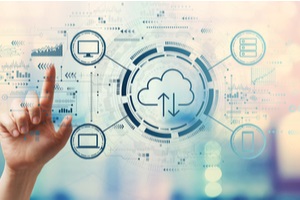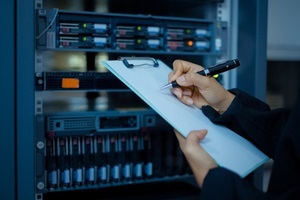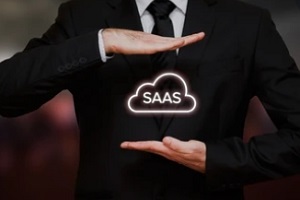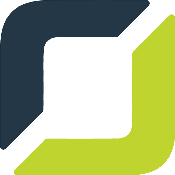After the pandemic struck the U.S. in 2020, people were shifting to remote work, and now that the pandemic has eased, people prefer remote work over a physical location. While remote work has several benefits, there can be several drawbacks that an organization needs to face in a remote work environment.
Companies that operate on a remote work basis have to incorporate the assistance of SaaS solutions. The biggest threat with SaaS applications is security. According to a 2019 study, 93% of respondents were concerned with the data security of a SaaS application. Data security has become such a widespread concern because of the constant threat of a cyberattack.
Organizations have sensitive information that they need to protect at all costs, and failure to have a robust security system can be catastrophic. There have been 300 major data breaches in the last decade, with over 100,000 records stolen or compromised.
While SaaS is a great solution that helps organizations automate their processes without the need to be restricted by location, some concerns accompany it. This article will discuss all the aspects of the SaaS security checklist and how you can ensure that your system is ready to mitigate any threats.
Protect Your SaaS Against These Security Threats
 Before we can discuss how to improve your systems, we need to consider the potential threats you may face. Since SaaS is primarily based on the cloud and does not need a physical infrastructure or servers, it is more prone to cyberattacks. Security is the only aspect of legacy infrastructure that supersedes SaaS solutions. While migrating to a cloud infrastructure can help you save time, money, and resources, legacy infrastructure provides a lot more security when it comes to sensitive data.
Before we can discuss how to improve your systems, we need to consider the potential threats you may face. Since SaaS is primarily based on the cloud and does not need a physical infrastructure or servers, it is more prone to cyberattacks. Security is the only aspect of legacy infrastructure that supersedes SaaS solutions. While migrating to a cloud infrastructure can help you save time, money, and resources, legacy infrastructure provides a lot more security when it comes to sensitive data.
However, legacy infrastructure can still be at risk of getting breached, and SaaS applications can be configured so that they are protected from external threats. It all comes down to how the application is configured and secured. The following are some of the significant threats an organization can face regarding cyberattacks.
Security Misconfiguration
The first step to implementing a SaaS solution is configuring it based on the security that you need. There are several instances where there can be misconfiguration issues. Misconfiguration occurs when the computing assets are not set up correctly. This can lead to loopholes in the security protocol of your SaaS application, making it prone to attacks.
Since a major chunk of global organizations is moving towards cloud environments, there is more personal information stored on the cloud than ever before. This makes it risky for an organization to have any misconfiguration in their software.
Cross-Site Scripting (XSS)
Another way attackers can infiltrate the security systems involves injecting malicious codes into the pages viewed by users. While this cannot be predicted, it can be detected and prevented with the proper SaaS implementation. Solutions such as the latest version of Ruby on Rails and React JS allow you to automatically avoid these issues on your web pages and servers.
Identity Theft
Identity theft has become a growing concern in this day and age. According to the 2020 FTC Consumer Sentinel Data Book, identity fraud had the largest share of fraud reports to the FTC. It accounted for 29.39% of all reported scams last year.
Our data is easily accessible on the internet because of the digital age, and protecting this data is essential to avoid these instances. A SaaS application can hold sensitive personal information on your employees, and attackers can use it to commit identity theft. Information such as name, age, date of birth, and even banking information can be breached due to an attack.
The only way to protect this data on your SaaS application is through firewalls, LDAP, encryption at-rest and in-transit, etc.
Lack Of Logging And Monitoring
You need to constantly keep track of your logs if you want to keep your systems safe. SaaS applications come with electronic audit logs that track the activity within the system. Lack of logging and monitoring can allow malicious activity without your business even noticing it.
So why do you need to have this data protected? The primary reason is cost and reputation. A data breach can cost you a lot in terms of fines and penalties and even destroy your organization’s reputation due to the failure to safeguard customer info. Studies have indicated that globally the average cost of a data breach was $4.24 million in 2020. This increased by $3.86 million since 2019, making it clear that security is a growing concern and becoming more perilous by the year.
Security Checklist For SaaS Applications
Security is a significant part of any SaaS application, and implementing it can often be prone to errors. To perfectly program the application to mitigate risks, there are a few steps that you can take that will help you maximize security performance:
Step 1. Create A Detailed Security Guide
 Before you implement anything, the first step is to create a plan for your SaaS security checklist. Some key factors need to be included in your project. The first step is to evaluate your software. This should be an extensive audit that will help you detect all risks associated with your software environment. There are several frameworks available that can help you find the inherent issues.
Before you implement anything, the first step is to create a plan for your SaaS security checklist. Some key factors need to be included in your project. The first step is to evaluate your software. This should be an extensive audit that will help you detect all risks associated with your software environment. There are several frameworks available that can help you find the inherent issues.
The second part is identification. This refers to the process of understanding what you need to do to identify and eliminate risks. Next, you will create a SaaS security checklist of all the internal security controls and set standards for your SaaS software.
Finally, it helps if you instill a security-friendly culture—creating a plan on how to train employees on the security practices and what needs to be done in case of a cyberattack. Planning is essential, and it will give you a clear guideline on who does what, not to mention a great way to track the progress.
Step 2. Secure Software Development Life Cycle (SSDLC)
After evaluating your software, the next step is to create a secure software development cycle. As the name suggests, the SSDLC defines the process by which the software will be developed. This pertains to not only the development process but also the pre-development stage. It is essential to ensure that the entire development process incorporates solutions that detect security issues at each stage.
You can take advantage of the following techniques to secure your software development lifecycle:
- Promote secure coding practices to avoid any loopholes in the system
- Conduct a thorough vulnerability analysis to ensure the integrity of your software
- Create threat risk modeling to prepare yourself for all types of issues you may face in the future
- Check how difficult it would be for an attacker to breach your system by penetration testing
Step 3. Secure Deployment
Deployment needs to be done right to be effective against cyber attackers. Experts recommend that your organization opts for continuous deployment to enhance security. Continuous deployment refers to validating the stability and correctness of the changes to the code base. This process of constant deployment not only provides data security but can also help you in data segregation and infrastructure hardening using methods such as:
- Automated testing methods to keep a regular check of your infrastructure
- Using automated rolling deployment tools
- Real-time alerts and monitoring to help you keep track of any threats
Step 4. Automated Backups
Creating backups is essential to keep your data secure. A backup can save you much hassle, whether you are met with a cyberattack or any other unforeseen circumstance. Backup generation is viewed as an unremarkable security measure that should always be included in your SaaS security handbook. Automating this process ensures a backup is created after specific intervals.
This ensures that even if you forget to create a backup, your system will still make a backup for you. It is advised that you should manually create a backup as well to ensure that the business continuity is not affected and simplify the process of disaster recovery.
Step 5. Security Controls
Security controls can be found in several different forms. You may have seen the option to enable two-factor authentication on your email login. This is a form of security control that adds another layer of protection to your information.
These controls help your organizations identify, reduce, or avoid security issues to different physical and computing assets. Following is a list of proven security controls that SaaS applications use:

- Identity and access management (IAM)
- Specific password policies to ensure employees are using strong passwords
- Enabling two-factor authentication
- Enabling access controls
- Opting for privileged access management systems
- Ensuring data tokenization and encryption
- Implementing progressive malware prevention
- Ensuring data loss prevention
- Enabling proxy-based real-time threat detection
- Offline repository inspection
- Regularly logging and monitoring controls to ensure your system is safe
Learn More About SaaS Security With Orases
Data is growing exponentially, and organizations are working towards improving their security practices. According to IDC, global data will reach 175 zettabytes by 2025. The more data you have online, the larger the surface area for an attack. Since most organizations are moving to cloud computing to compensate for the growing rate of data, SaaS has started playing a significant role in several organizations.
While SaaS is a great step forward from legacy systems, the only problem is security concerns. SaaS is not an unsecured solution, but the developers and deployment team need to ensure that all security aspects of the applications are considered.
SaaS can be a great way to automate your processes and, if done right, can offer you better security and protection than your current legacy systems. Follow our checklist, and you can rest easy knowing that all your sensitive data is protected. Reach out to Orases, a custom SaaS development company, for more information about SaaS security.






